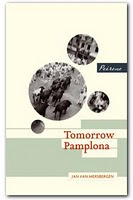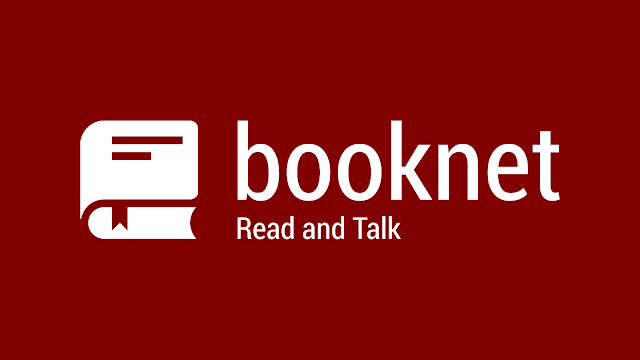Tomorrow Pamplona Blog Tour 2011, Gig 4
Jan van Mersbergen and Laura Watkinson, respectively author and translator of Tomorrow Pamplona, are on a blog tour organised by Peirene Press.
Here is what I asked them...
 To what extent was Jan involved in the translation process and what do you both feel has been gained and/or lost during the transition from Dutch to English - both linguistically and culturally? Perhaps you could give us an example of a particularly successful solution or of a compromise that had to be reluctantly made.
To what extent was Jan involved in the translation process and what do you both feel has been gained and/or lost during the transition from Dutch to English - both linguistically and culturally? Perhaps you could give us an example of a particularly successful solution or of a compromise that had to be reluctantly made.
Jan:
In the first place I think a translation is wonderful, because readers now can read the novel in English. My English isn't good enough to write a novel, that would be a disaster, so I only can write in Dutch and our language is really small. I guess about 25 million people read Dutch (Holland, Belgium, Surinam, Antillen). English is big!
It's hard for me to judge if the translation is ok. When I read my novel now it's like reading an English novel. It feels English. That's a good thing.
Laura did a great job and worked on her own for most of the time. She had some clever questions about the story, about the boxer, about the conversations in the car. I really gave her my Dutch novel and hoped for the best. I've heard writers can stick to their book and their language. I didn't. Dutch is my language and I know how to say things in Dutch. In English, millions and millions of people can do a lot better... and a few can turn my book into an English book. Thanks Laura!
Laura:
Jan was the perfect writer for any translator. He made it clear that he was available to answer any questions I might have, but that he was going to leave it up to me to get on with the job. I worked through the book until I’d reached a point where I had just a few points I wanted to talk through with Jan and then we met up in a café in Amsterdam to discuss them. I’m sure he thought that some of my questions were pretty odd! When you’re translating, you sometimes get hung up on tiny details. The meaning seems perfectly obvious to the author, but when you start to put something into English, you might find that you’re not quite sure of the tone of voice, for example, or you can’t exactly picture how a particular conversation or sequence of actions works or if perhaps there’s more significance to a certain line than just the literal meaning. The answers might have no impact on your final translation, but sometimes it’s just good to know for yourself. It was great to be able to talk through those points with Jan and some of the queries resolved themselves quite simply as I was talking to him. Jan also read the translation before publication – I was really relieved to hear that he was happy with it.
Meike from Peirene Press was also a great help, as we had a number of useful chats and exchanges of emails. Translating can be quite a lonely experience, so it’s great to be able to talk things through with someone you trust.
As for whether anything has been gained or lost during the translation, I can’t really judge that, as I think I’ve been buried too deeply in the words to have an overall picture. On a very micro level, I will say that the English text has gained a ‘please’ where the Dutch had none. Conversely, it lost a low metal bar or guardrail along an Amsterdam canal. Any Dutch reader knows these guardrails, but when I found myself starting to explain what they were in the English translation, I decided that the guardrail didn’t in fact need to be there. Oh, and the waffles that Danny eats right at the end of the book? They are in fact ‘gevulde koeken’ in the original text, a Dutch treat that the Van Dale Dutch-English dictionary describes as ‘almond paste cakes’. Mmm, tasty! So, rather than explain, I turned them into waffles, something that’s just as likely as a snack in the Netherlands, but which is also recognisable to English-speaking readers.
Click on this link to follow Jan and Laura on their tour!
Here is what I asked them...
 To what extent was Jan involved in the translation process and what do you both feel has been gained and/or lost during the transition from Dutch to English - both linguistically and culturally? Perhaps you could give us an example of a particularly successful solution or of a compromise that had to be reluctantly made.
To what extent was Jan involved in the translation process and what do you both feel has been gained and/or lost during the transition from Dutch to English - both linguistically and culturally? Perhaps you could give us an example of a particularly successful solution or of a compromise that had to be reluctantly made.Jan:
In the first place I think a translation is wonderful, because readers now can read the novel in English. My English isn't good enough to write a novel, that would be a disaster, so I only can write in Dutch and our language is really small. I guess about 25 million people read Dutch (Holland, Belgium, Surinam, Antillen). English is big!
It's hard for me to judge if the translation is ok. When I read my novel now it's like reading an English novel. It feels English. That's a good thing.
Laura did a great job and worked on her own for most of the time. She had some clever questions about the story, about the boxer, about the conversations in the car. I really gave her my Dutch novel and hoped for the best. I've heard writers can stick to their book and their language. I didn't. Dutch is my language and I know how to say things in Dutch. In English, millions and millions of people can do a lot better... and a few can turn my book into an English book. Thanks Laura!
Laura:
Jan was the perfect writer for any translator. He made it clear that he was available to answer any questions I might have, but that he was going to leave it up to me to get on with the job. I worked through the book until I’d reached a point where I had just a few points I wanted to talk through with Jan and then we met up in a café in Amsterdam to discuss them. I’m sure he thought that some of my questions were pretty odd! When you’re translating, you sometimes get hung up on tiny details. The meaning seems perfectly obvious to the author, but when you start to put something into English, you might find that you’re not quite sure of the tone of voice, for example, or you can’t exactly picture how a particular conversation or sequence of actions works or if perhaps there’s more significance to a certain line than just the literal meaning. The answers might have no impact on your final translation, but sometimes it’s just good to know for yourself. It was great to be able to talk through those points with Jan and some of the queries resolved themselves quite simply as I was talking to him. Jan also read the translation before publication – I was really relieved to hear that he was happy with it.
Meike from Peirene Press was also a great help, as we had a number of useful chats and exchanges of emails. Translating can be quite a lonely experience, so it’s great to be able to talk things through with someone you trust.
As for whether anything has been gained or lost during the translation, I can’t really judge that, as I think I’ve been buried too deeply in the words to have an overall picture. On a very micro level, I will say that the English text has gained a ‘please’ where the Dutch had none. Conversely, it lost a low metal bar or guardrail along an Amsterdam canal. Any Dutch reader knows these guardrails, but when I found myself starting to explain what they were in the English translation, I decided that the guardrail didn’t in fact need to be there. Oh, and the waffles that Danny eats right at the end of the book? They are in fact ‘gevulde koeken’ in the original text, a Dutch treat that the Van Dale Dutch-English dictionary describes as ‘almond paste cakes’. Mmm, tasty! So, rather than explain, I turned them into waffles, something that’s just as likely as a snack in the Netherlands, but which is also recognisable to English-speaking readers.
Click on this link to follow Jan and Laura on their tour!



I've never heard about this book before but I really want to read it. Thanks for sharing this with us.
ReplyDelete